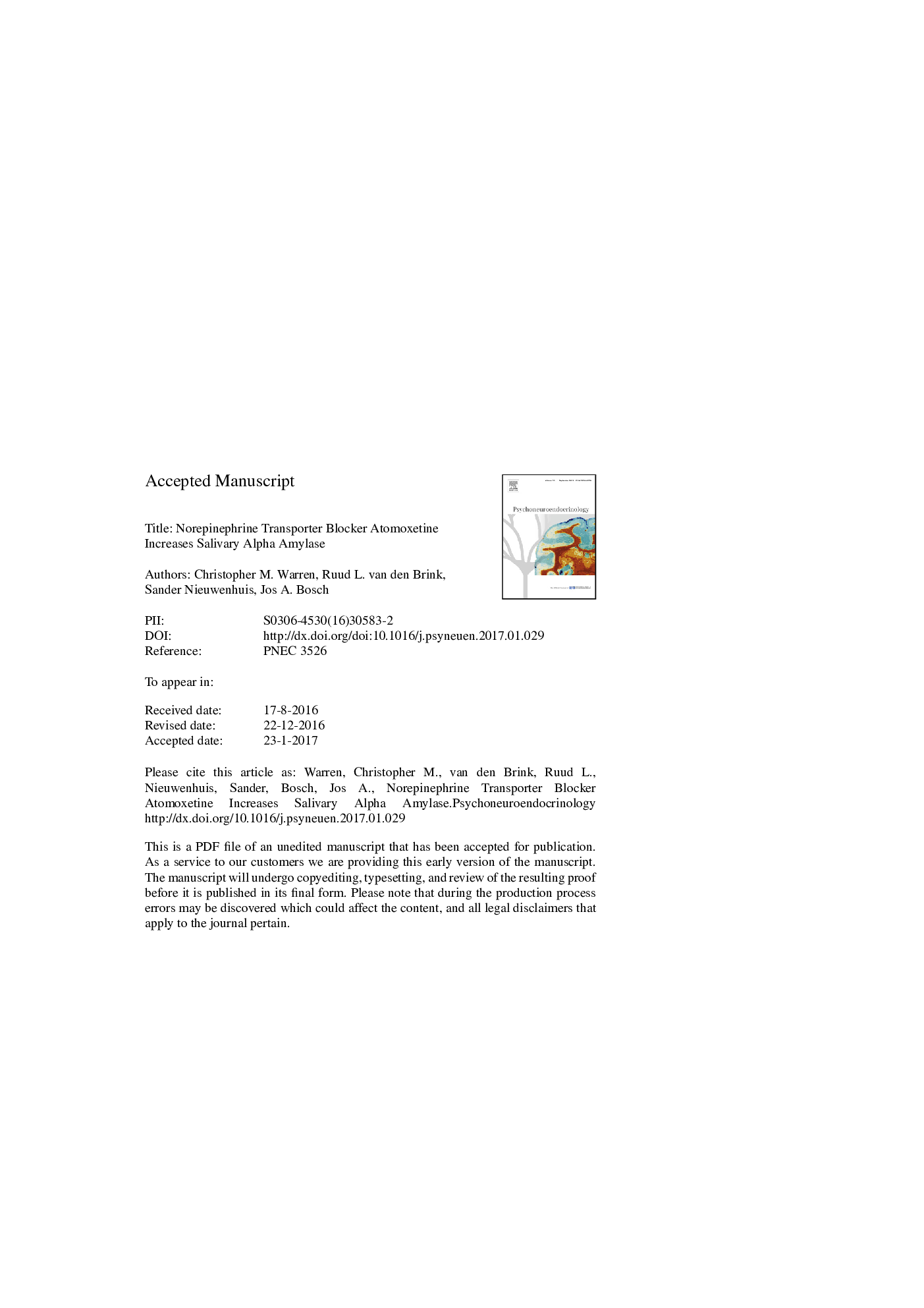| Article ID | Journal | Published Year | Pages | File Type |
|---|---|---|---|---|
| 4934502 | Psychoneuroendocrinology | 2017 | 15 Pages |
Abstract
It has been suggested that central norepinephrine (NE) activity may be inferred from increases in salivary alpha-amylase (SAA), but data in favor of this proposition are limited. We administered 40 mg of atomoxetine, a selective NE transporter blocker that increases central NE levels, to 24 healthy adult participants in a double-blind, placebo-controlled cross-over design. Atomoxetine administration significantly increased SAA secretion and concentrations at 75-180 min after treatment (more than doubling baseline levels). Consistent with evidence that elevation in central NE is a co-determinant of hypothalamic-pituitary-adrenal axis activity, salivary cortisol also approximately doubled at the same time points. Moreover, changes in salivary cortisol positively correlated with SAA (0.44 < rho < 0.56), bolstering the position that the origin of the changes in SAA reflect central NE. This work points toward the potential value of SAA as an inexpensive and non-invasive procedure to obtain information about activation of the central NE system.
Related Topics
Life Sciences
Biochemistry, Genetics and Molecular Biology
Endocrinology
Authors
Christopher M. Warren, Ruud L. van den Brink, Sander Nieuwenhuis, Jos A. Bosch,
